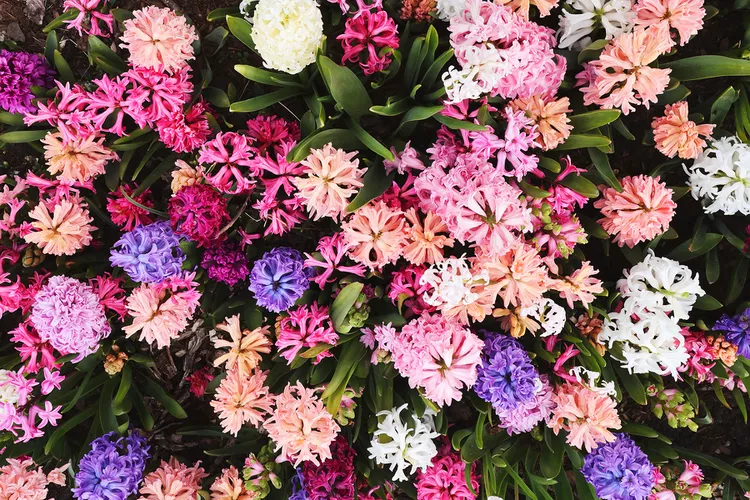The hyacinth flower was once the height of fashion in Europe and America, but today, few people grow it in their gardens. Even Stephen Orr, editor in chief of Better Homes and Gardens, has been wary of planting these bulbs.
“Modern hyacinths are odd-looking flowers—stout, stiff, top-heavy, and waxy enough to almost look artificial,” he says. “To gardeners who are drawn to naturalistic-looking plantings, these anachronistic flowers have been out of style for decades. Even I have avoided planting them in my garden, where I assumed they’d stick out like sore thumbs.”
But after successfully planting and growing more than a dozen hyacinth flower varieties over the past year, Orr is on a mission to bring these classic flowers back to gardens everywhere. To inspire your late-summer and early-fall planting, here are a few of the most interesting facts about hyacinth flowers.
1. They Smell Incredible
Orr says one of the draws of hyacinths is that they make long-lasting cut flowers, and can fill an entire room with their enticing scent. “I’ve loved hyacinths since I was a kid. Mainly it’s their strong scent that draws me in, which I’d describe as a mix of honey, sweet corn, and wisteria,” he says.
Cut hyacinths as the stems start to lengthen and the tight buds begin to show color. Like tulips, they will continue to grow in the vase until they reach their full height. Stems will last up to a week if the water is changed every two days.
2. You Can Grow Them in Almost Every Color
When shopping for bulbs, you won’t be limited by color options. Hyacinths are available in almost every color, although Orr explains blue and white varieties more closely resemble the original pale blue species of wildflower.
“I appreciate their wide color range: From pure white to almost black, with nearly a full spectrum of pastels in between,” he says. “I tend to group mine into warm or cool tones. But if you like a carnival of color, feel free to mix and mingle them to your heart’s content.”
3. Many Hyacinth Varieties Are Rare
“Introduced to Europe from Turkey in the 16th century, hyacinths became so popular that by the early 18th century, there were more than 2,000 hybrids,” Orr explains. “Now you might find only a handful in most catalogs.”
Vanessa Elms, owner of Old House Gardens, says there are multiple reasons hyacinths are one of the most commercially-endangered bulbs. Some gardeners feel that hyacinths can be hard to combine with other plants in the garden; others aren’t drawn to them because they’re not currently as trendy as say, peonies and philodendrons. Elms also explains that in the Holland bulb fields where they are grown commercially, the bulbs can be susceptible to a specific blight if they aren’t handled carefully, which makes the yearly supply for fall planting unpredictable.
Because some hyacinth varieties aren’t widely available, they make a unique addition to a backyard flowerbed. “Hyacinths are a valuable piece of horticultural history,” Orr says. “When you plant one, especially if you score a rarer type, you are preserving its genes (some of which stretch back to the 1500s) for future gardeners.”
4. They Grow Best in Zones 5-7
Hyacinths enjoy similar growing conditions to tulips and other bulbs that are native to the Eastern Mediterranean. They grow well in Zones 5-7—with a stretch to Zones 4-8—and prefer a wet spring and dry summer and fall. Orr suggests planting hyacinths where they can be observed closely in early spring, such as by frequently used walkways or entries.
Hyacinths like nutrient-rich but free-draining soil, so if you have heavy, damp, or clay conditions, lighten the planting area by incorporating grit or sand.
5. They Attract Pollinators
The bright colors of hyacinth petals will attract plenty of pollinators. Welcome bumblebees and butterflies to your garden with a vibrant mix of hyacinths in all shades. Since they bloom in early spring, hyacinths are one of the first sources of nectar for pollinators after a long winter.




















